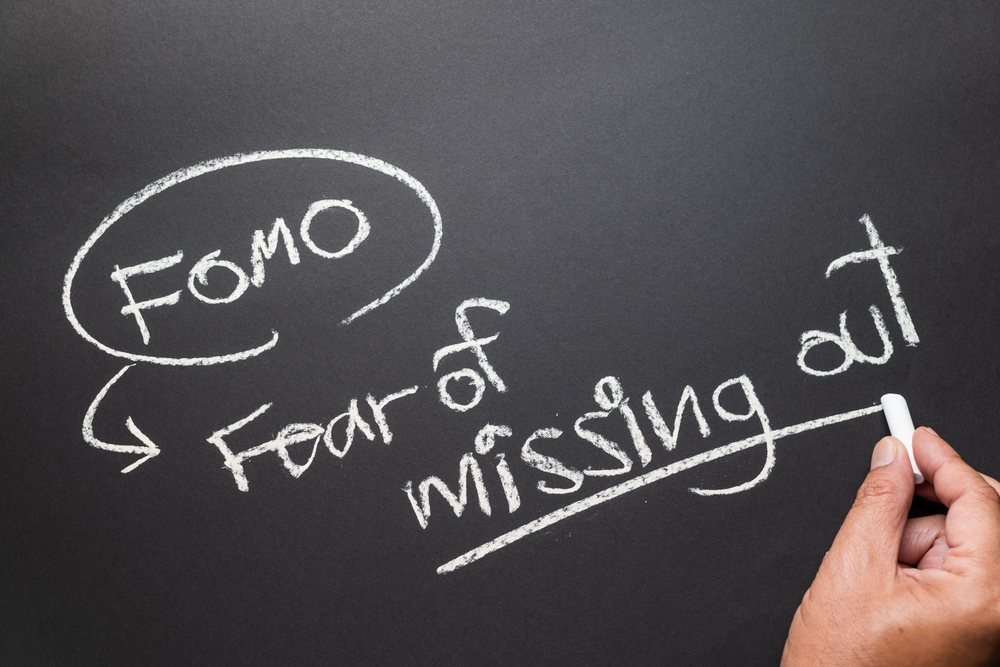
The fear of missing out is something we know both from everyday life and from investing. A sharp rise in markets, media full of news about record gains, or friends talking about “great investments” trigger the pressure to act quickly—often without a plan or analysis. The result is rushed decisions that bring disappointment instead of profit. That’s why it’s worth understanding the FOMO effect (fear of missing out). It’s not just an emotion but a factor that can significantly shape behavior in financial markets.
What is the FOMO Effect in Investing?
In investing, FOMO manifests as a strong emotional reaction to the rising price of an asset or the wave of enthusiasm around a particular trend. An investor feels that if they don’t react immediately, they’ll miss a once-in-a-lifetime opportunity, and so they “jump on the train” when it may already be at the station. This is often linked to relying on tips from the media or social networks, or the belief that “everyone else is making money—except me.” Market history offers plenty of examples, from the dot-com bubble[1], when internet companies with no real value were being bought, to modern “meme stocks”[2] and cryptocurrencies whose prices soared mostly due to crowd psychology.
Psychology
To understand why FOMO is so powerful, we need to look at human psychology. People naturally observe group behavior and don’t want to be left out when others are acting. In investing, this effect is amplified by emotions like greed or fear of failure. At the brain level, dopamine plays a role—it’s linked to the feeling of reward: when prices rise sharply, the brain interprets it as a chance for quick gratification. Stress and group pressure add to this. If everyone is buying, staying passive can feel like a mistake. Interestingly, these mechanisms affect even experienced investors. While they have more knowledge and tools, they can’t entirely turn off biological impulses. The difference is that trained investors learn to recognize them and consciously apply the brakes.
Risks in Investing
If FOMO isn’t managed, it can have serious consequences. A typical risk is buying at the peak, when the price already reflects euphoria and room for growth is limited. In such moments, investors often act without strategy, without clear goals, and without considering risk. This leads to investing larger sums than reasonable, or entering instruments they don’t understand at all. Capital loss then becomes just a matter of time—and with it comes a loss of confidence in one’s own decision-making. At the core of these problems lies a conflict between short-term emotions and long-term goals: the immediate desire for profit clashes with the patience needed for successful investing.
How Not to Lose Your Head During Sharp Market Moves
The good news is that FOMO can be managed if the investor has a clear framework. The first step is a plan and strategy—knowing why you invest, your time horizon, and what you want to achieve. The second is diversification, which spreads risk and prevents a single bad choice from destroying the entire portfolio. Equally important is discipline: sticking to rules and not improvising under emotional pressure. Continuous education also helps. The better you understand markets, the easier it is to resist panic or euphoria. Practical techniques such as stop-loss orders (more on effective risk management in our previous article) or regular investing also help keep the process under control. Thanks to these steps, an investor has a chance to make calm decisions even when prices swing up and down.
How to Recognize That You’re Falling Into FOMO
While strategies and techniques can be set in advance, the hardest part is often realizing that you’re acting under the influence of FOMO right now. A warning sign is the feeling that you must invest immediately because the opportunity will never come again. Another is blindly following the crowd or adopting opinions from the media without critical thinking. A common one is the inner conviction that “it’s already late, I have to catch it.” In such moments, a short self-reflection can help: Do I understand what I’m buying? Is this step aligned with my plan? Would I make the same decision if nobody was talking about it? If the answer is “no,” it’s clear evidence that emotions have taken the lead. Awareness itself is the first step toward stopping them.
Summary and Recommendations
The FOMO effect is natural and unavoidable, but that doesn’t mean we have to give in to it. While in everyday life it may only bring a feeling of regret, in investing it can cost thousands of euros. That’s why it’s important to learn to recognize it early and have tools ready to counter it. The best protection is a clear strategy, discipline, and continuous education (find more tips and insights on trading education in our previous article), all of which strengthen the ability to think critically. An investor who doesn’t let themselves be controlled by the crowd and keeps emotions in check has a much higher chance of long-term success.
For more investment trends and useful tips, check out our previous articles on the AxilAcademy website.

He has been trading in the capital markets since 2002, when he started as a commodity Futures trader. Gradually he shifted his focus to equity markets, where he worked for many years with securities traders in Slovakia and the Czech Republic. He also has trading experience in markets focused on leveraged products such as Forex and CFDs, and his current new challenge is cryptocurrency trading.


